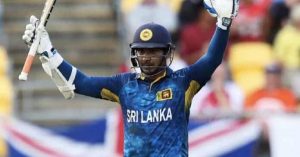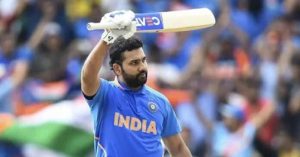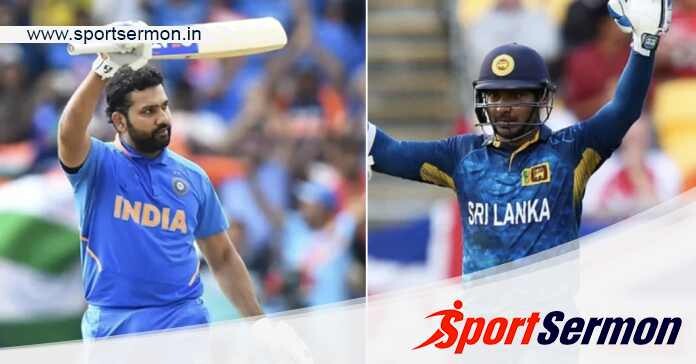A World Cup century is a significant achievement in the context of the World Cup, as it demonstrates a player’s ability to perform at the highest level in a crucial tournament. Cricket players frequently contribute to their team’s success and can be crucial in determining match outcomes. World Cup centuries are celebrated milestones that can have a long-term impact on a player’s career and legacy.
Similarly, the ongoing ODI World Cup 2023 has seen a barrage of centuries, with several batters easily scoring them. South Africa, in particular, has produced dominant batting performances. Four South African batters are among the top five run scorers in the tournament, with Quinton De Kock standing out for making centuries a habit.
The wicketkeeper batter has been on fire this World Cup, currently leading the run-scoring charts. His recent century against New Zealand in Pune was his fourth of the tournament, cementing his place among the elite batters who have scored multiple centuries in a single ODI World Cup edition. This is not the first time this has happened in World Cup history; let us now look at three players who have scored the most tons in a single edition of this marquee event.
Cricket players with the most centuries:
1. Kumara Sangakkara (4 centuries):

Kumar Sangakkara’s performance in the 2015 ODI Cricket World Cup was nothing short of outstanding. Throughout the tournament, the veteran Sri Lankan wicketkeeper-batsman demonstrated his class and consistency.
Finishing as the tournament’s leading run-scorer. Sangakkara scored 541 runs at an incredible average of 108.20, including four centuries. His centuries came against Bangladesh, England, Australia, and Scotland, the last three of which were all consecutive, highlighting his exceptional form. The ability of Sangakkara to anchor the innings and play critical roles in high-pressure situations was on full display. He was instrumental in leading Sri Lanka to the World Cup final.
Despite the fact that Sri Lanka finished second, Sangakkara’s outstanding performances earned him the Player of the Tournament award. His legacy in one-day international cricket was further cemented during this World Cup, and he remains one of the game’s all-time greats.
2. Quinton de Kock (4 centuries):

Quinton de Kock has recently joined the select group of batters who have scored more than three centuries in a single edition of the ODI World Cup. His outstanding performance in this tournament has been characterized by remarkable consistency. De Kock’s reputation has grown further after centuries against Sri Lanka, Australia, Bangladesh, and New Zealand.
He scored 100 runs in 84 balls against Sri Lanka, contributing to his team’s record-breaking ODI World Cup total. He scored 109 runs in 106 balls against Australia. De Kock’s 174 runs in 140 balls against Bangladesh set a record for the highest ODI World Cup score by a wicketkeeper-batsman. He scored 114 runs in 116 balls against New Zealand.
3. Rohit Sharma (5 centuries):

Rohit Sharma delivered one of the most memorable performances of the 2019 ODI Cricket World Cup. He cemented his position as one of India’s top limited-overs batsmen as a result of his efforts. As one of the tournament’s leading run scorers, Rohit scored five centuries, breaking the record for the most centuries in a single World Cup edition. Rohit demonstrated exceptional consistency and adaptability, adapting his game to various match situations.
The captain of India scored centuries against South Africa, Pakistan, England, Bangladesh, and Sri Lanka. His performances were critical in India’s progress to the semi-finals. Throughout the tournament, the opener maintained great poise and strokeplay. Despite India losing in the semi-finals to New Zealand, Rohit Sharma’s World Cup campaign was a resounding success.
This also earned him the Golden Bat award as the tournament’s leading run-scorer. The star Indian batter’s outstanding run-scoring ability and ability to anchor the innings have made him one of the World Cup’s most impactful players.
Final Word:
A One Day International (ODI) is a type of limited-overs cricket match played between two international teams in which each team is given a set number of overs, currently 50, and the game can last up to 7 hours. The Cricket World Cup, which is held every four years, uses this format. Limited Overs International (LOI) matches are also known as One Day International (ODI) matches, though this term can also refer to Twenty20 International (T20I) matches. They are major matches at the pinnacle of List A, limited-overs competition.
In the late twentieth century, the international one-day game emerged. Australia and England played the first One-Day International (ODI) on 5 January 1971 at the Melbourne Cricket Ground. When the first three days of the third Test were rained out, officials decided to postpone the game and play a one-day game of 40 eight-ball overs per side instead. Australia won by a margin of five wickets. The One-Day Internationals were played in white shirts and red balls. Cricket’s general rules apply. In one-day internationals, however, each team bats for a set number of overs.
In the early days of ODI cricket, the number of overs per side was generally 60, and matches were also played with 40, 45, or 55 overs per side, but it is now uniformly fixed at 50 overs.
So, this was all about the Cricket players with the most centuries in a single edition. Also read, Shubham Gill & Sara Tendulkar spotted amid dating rumours.

